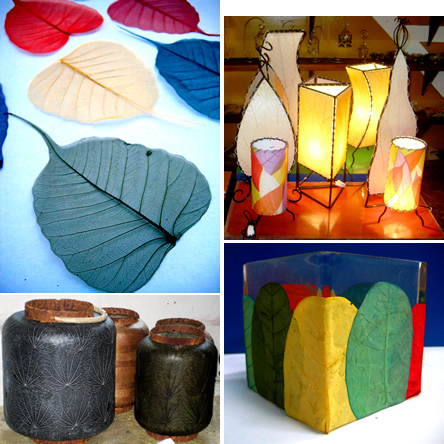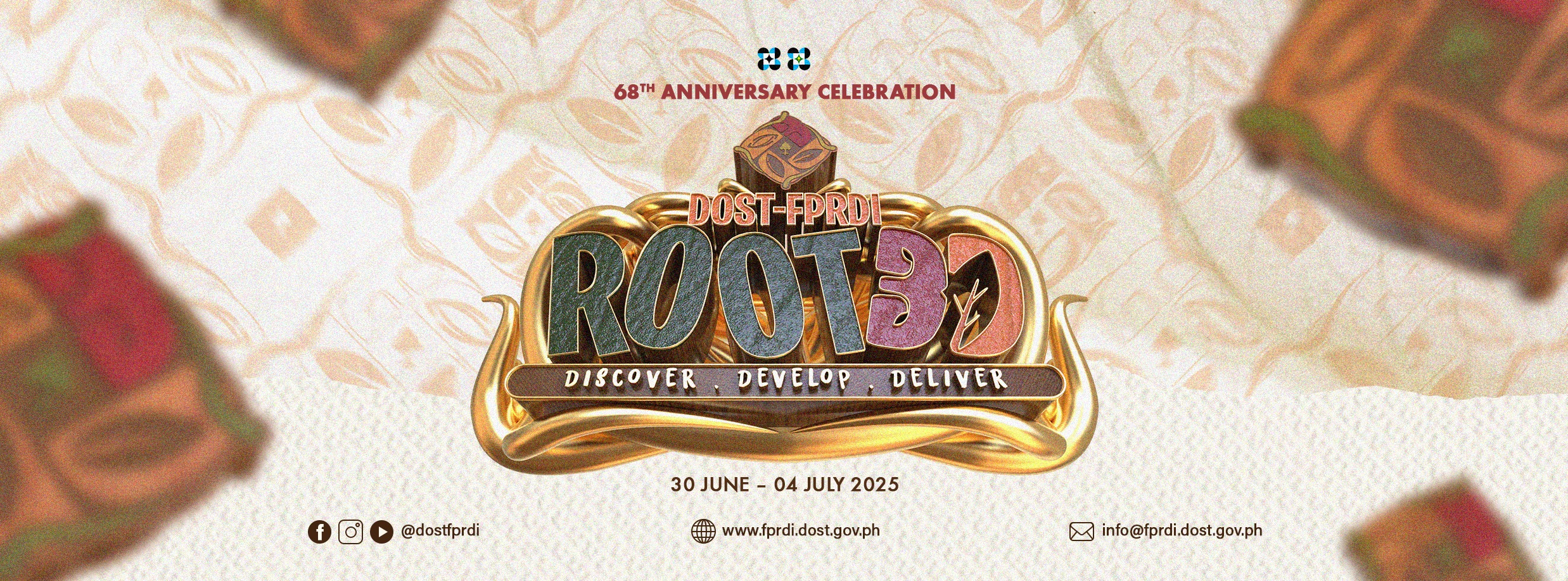Skeletonized leaves brighten PH handicraft industry
Starting in the late 1990s, the arresting beauty of skeletonized leaves has captured the imagination of local handicraft artists and clients. Rising almost from obscurity, they have become a popular material for accenting stationery, packaging, lighting fixtures, furniture and all sorts of decorative and novelty products.
The efforts of the Department of Science and Technology’s Forest Products Research and Development Institute (DOST-FPRDI) have been a big help. Over the last decade, the Institute has trained around 1,500 people nationwide on a new method of leaf skeletonizing.

|
Up close, the leaf skeleton is made up of a complex of very fine veins, the intricate patterns of which rival those of expensive laces.
Says Mr. Cesar O. Austria, Senior Science Research Specialist of FPRDI’s Technical Services Division, “Using the old technique, heavily-veined leaves are skeletonized by soaking them in cold water for 3-5 weeks or burying them in mud until their fleshy pulp has dissolved and only the veins remain.
“FPRDI modified this procedure and came up with a faster, easier version. One simply boils fresh leaves in caustic soda solution until the soft tissues are dissolved and only the skeletons remain. These are then bleached to remove their natural color and prepare them for dyeing.” Salay Handmade Paper Industries, Inc. (SHAPII), one of the country’s top exporters of handmade paper products, uses leaf skeletons to decorate their greeting cards, fans, frames, notebooks and boxes.
According to Austria, “SHAPII is a multi-awarded company that ships its products to major markets in the US and Europe. It is known for its eco-friendly practices and for giving jobs to many men and women in the town of Salay in Misamis Oriental.
“Skeletonized leaves are certainly a welcome addition to the raw material stock of the handicraft industry and FPRDI is happy to have helped the many small and very small shops all over the country which now make them using the newer technique,” observes Austria.
Worldwide, the country continues to be a leader in handicraft production. According to Mr. Dennis Orlina of the Philippine Chamber of Handicraft Industries, Inc. (PCHI), our exporters plan to tap new markets in South America, Africa, Russia and Vietnam as they aim for a 10-percent growth in shipments this year. Last year, Philippine handicraft exports were estimated to have reached US$130 million. (Rizalina K. Araral , 18 March 2013)#











